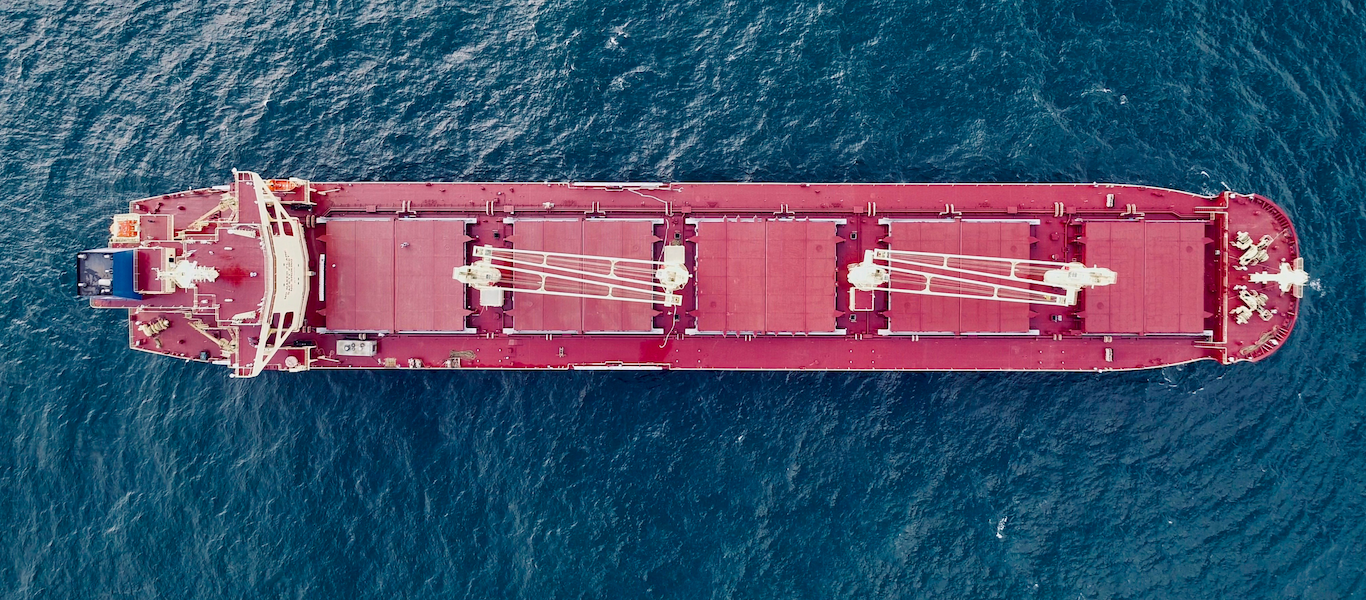
RightShip and INTERCARGO joined forces to deliver the DryBMS together. In this Q&A, RightShip CEO Steen Lund and INTERCARGO Secretary General Kostas Gkonis discuss the benefits of the new standard and their aspirations for industry-wide safety enhancements.
Why you think the industry needs DryBMS?
KG: It is essential that companies in the dry bulk sector have a widely accepted, common quality benchmark, which will drive significant improvements in dry bulk safety standards. This will support an industry which is working hard to achieve a positive impact on safety standards, but which faces structural differences along a complex supply chain (port-terminal-shipper-charterer-receivership). This varies from other ship types, for example, the tanker sector, which enjoys a much more regulated operational framework.
SL: A single guiding safety standard for the dry bulk sector has been long overdue, and I am pleased to see the DryBMS in its final stages, delivered in partnership between RightShip and INTERCARGO. In recent years, far too many avoidable incidents have occurred, and I believe DryBMS will help us to improve standards across dry bulk, given it has broad support from the likes of BIMCO, ICS and several global associations.
We know that our industry seeks to deliver services that are beyond base safety and sustainability compliance. Importantly, during Covid-19, we have seen that our essential workers deserve far better welfare and human rights protection, too.
The DryBMS team knows that this standard can be widely adopted, as we have seen considerable success elsewhere. Groups such as the OCIMF have delivered the Tanker Management and Self-Assessment (TMSA) program, which has ensured fundamental cultural change in safety management. We hope DryBMS will follow a similar trajectory and lift the safety standard of dry bulk shipping markedly.
What do you hope the DryBMS will achieve?
SL: Firstly, I hope that DryBMS will create a deeper unity across the sector and put us on a path to a shared vision of optimum operational standards. We have too long been divided and this has segregated industry aspirations. Given the sheer volume of companies and associations that have expressed their support for DryBMS, I am certain that this new standard will drive systemic change.
Secondly, I hope this standard will help us to significantly reduce, if not eradicate avoidable incidents at sea. We want the standard to become an integral part of every owner and operator’s day-to-day communications and decision-making. As meeting the standard becomes second nature, we will significantly improve processes and in turn create a much safer working environment.
KG: DryBMS is offering our sector an additional and important tool, which will assist companies to embrace best practices, establish key performance benchmarks and raise the bar on safety, environmental and operational excellence.
Have you had any experiences during your career where you saw the need for a set of standards?
KG: As a manager, especially in the maritime sector and its complex operational context, it was apparent that clear and easily understood standards and procedures were necessary. Establishing such procedures has been fundamental for effective and efficient planning and operation.
SL: Standards are essential in all parts of our working life. Without a standard to aspire to, we cannot develop a clear path to improvement. Standards must not only be developed in many areas of the maritime industry but must consistently be reviewed in line with innovation. While the DryBMS provides us with clear expectations, there will be more to add in the coming years, as the industry continues to apply new guidelines and targets across sustainability and digitisation.
Over your career, have you worked on any projects with any companies who have tried to raise standards? How effective were these projects?
SL: Standards have many faces – digital as well as analogue. A recent project I engaged with entailed setting standards for the use of additively manufactured spare parts in the maritime industry. While the hardware was all about moving from e.g. a process of forging or casting to one of printing the parts, the controls entailed standardising the design data and the validation of the operability of the spare parts in a harsh marine environment. A project that truly tested the boundaries of raising standards and resulted in the rapid deployment of an increasingly diverse array of parts on board vessels.
KG: Membership of INTERCARGO demonstrates a commitment by our member companies to achieve the highest possible safety and operational standards in the industry. These member companies routinely share with us their concerns and the unique challenges they face. These include dealing with dangerous cargoes – with the ever-present threat of liquefaction, and the dangers of open hatches, enclosed spaces and insufficient under keel clearance.
What are your views on how DryBMS provides a clear pathway for improvement? Do you think this will make that improvement journey clearer for owners/operators?
SL: DryBMS provides a clear pathway for improvement through its four pillars of ‘people, performance, plant and process’. These pillars are broken down into 30 subject areas, against a simple benchmark of four levels of compliance, making quality improvement a straightforward process.
KG: The involvement of owners and operators in the process of developing DryBMS, and an ongoing consultation process open to the industry, will ensure that, for the dry bulk operator, this journey remains meaningful and effective in practice.
Which of the 30 standards or performance areas do you feel most passionate about?
KG: Safety culture improvement is a crucial subject area under which the company has a programme to develop and maintain a culture to enable safe, compliant and efficient operations. Safety is the top priority for INTERCARGO as evidenced by our work and agenda. Therefore, behavioural change and safety culture improvement efforts are fundamental.
In addition, we must acknowledge that the shipping industry is going through tectonic shifts in the face of sustainability and environmental stewardship. The further reduction of GHG emissions is the greatest environmental challenge ahead. Utilising innovative technologies will be key to enhancing environmental performance and energy efficiency. The subject area of environmental management aims to ensure that a company will manage the impact of its operations on the environment and integrate environmental requirements into its safety management system.
These elements are reflected in the first subject area of DryBMS – ‘Excellence in HSSE’ – the need for the highest standards in an organisation’s commitment to health, safety, security and the environment.
SL: I agree, all of the areas and standards are relevant to the totality of the DryBMS. However, I do believe that within the performance areas, the commitment to HSSE, represents an overarching starting point that must filter through a company’s culture, from senior management through to seafarers. I would like to see this commitment become so commonplace that it is ingrained in all aspects of operations.
Which of the 30 standards or performance area do you think would be most beneficial for the industry to target at this early stage?
SL: As above, success comes from the top down. We cannot expect our workers to adopt a strong commitment to safety standards if this is not reflected in the behaviour of a leadership team. An ongoing commitment to HSSE, Master’s reviews and honest company evaluation, will inevitably flow into the quality of performance, plant and processes.
KG: Our world, shipping, and the dry bulk sector are going through historic evolutions. Our times require a new mindset and culture that companies urgently need to embrace. A new order is underway, and this offers a once in a century opportunity for shipping companies to adapt. The ‘Management of change’ subject area aims to facilitate this, with a formal process to document, evaluate, approve and communicate temporary and permanent changes that could impact safe, compliant and efficient operations. Risk assessment provides the key to managing change effectively and so it should go hand in hand with management of change; indeed, throughout DryBMS, risk assessment plays a major role in furthering its aims.


